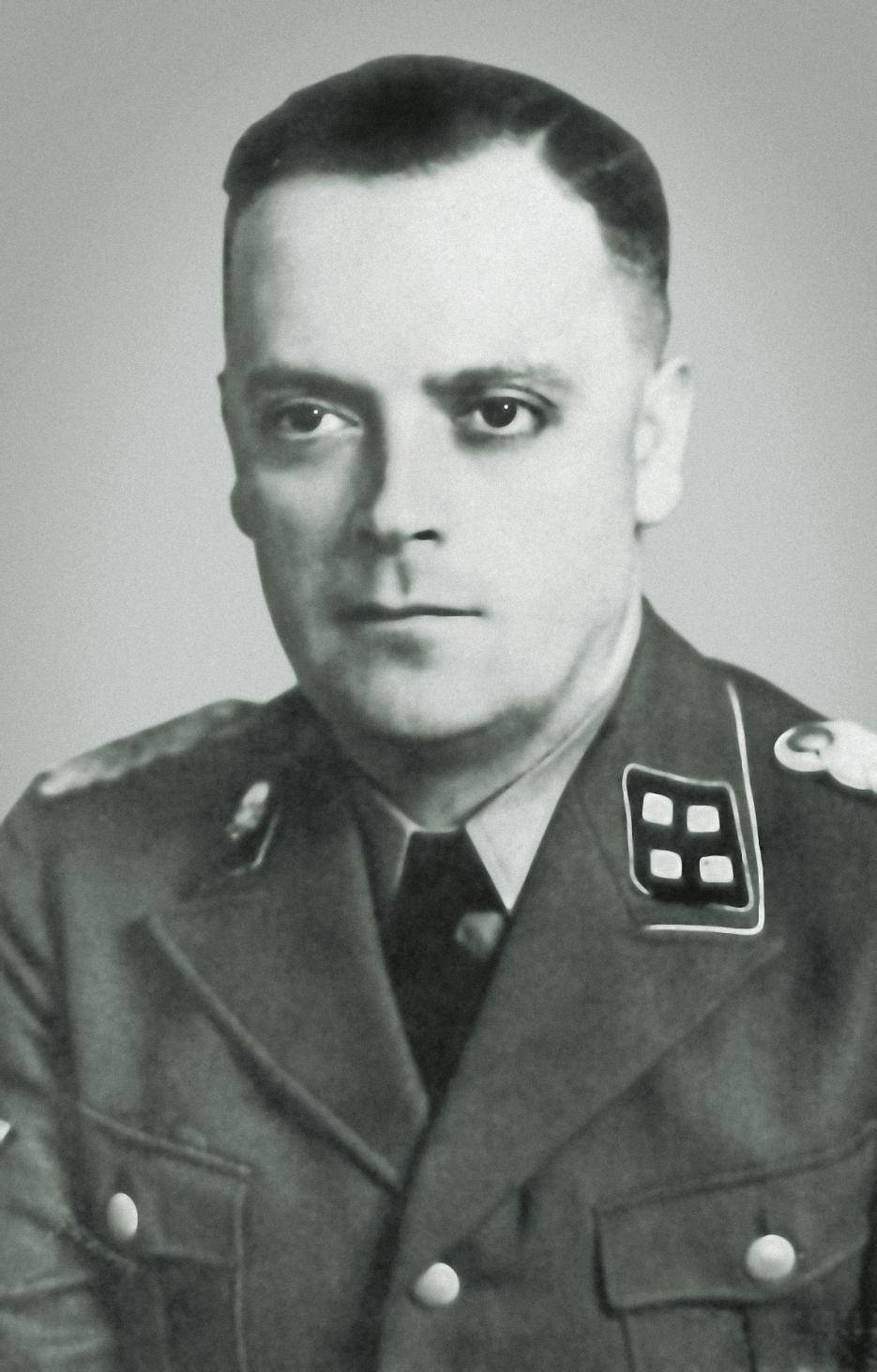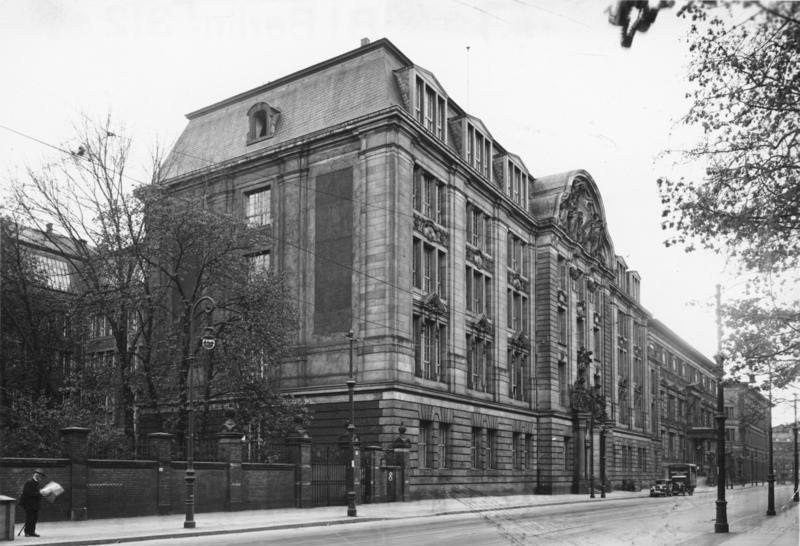|
Artur Liebehenschel
Arthur Liebehenschel (; 25 November 1901 – 24 January 1948) was a commandant at the Auschwitz concentration camp, Auschwitz and Majdanek concentration camps during the The Holocaust, Holocaust. After the war, he was convicted of war crimes by the Provisional Government of the Republic of Poland, Polish government and executed in 1948. SS career Liebehenschel was born on 25 November 1901 in Posen (now Poznań). He studied economics and public administration. Too young to serve in World War I, in 1919 he enrolled in the ''Freikorps, Freikorp "Grenzschutz Ost"''; he served as a sergeant major in the German armed forces (''Reichswehr'') afterwards. In 1932, he joined the Nazi Party and in 1934 the Schutzstaffel, SS, where he served in the ''SS-Totenkopfverbände, Death's Head Units''. Liebehenschel became the adjutant in the Lichtenburg concentration camp, and two years later was transferred to the Concentration Camps Inspectorate in Berlin. In 1942, when the SS Main Economic and A ... [...More Info...] [...Related Items...] OR: [Wikipedia] [Google] [Baidu] |
Poznań
Poznań () is a city on the River Warta in west-central Poland, within the Greater Poland region. The city is an important cultural and business centre, and one of Poland's most populous regions with many regional customs such as Saint John's Fair (''Jarmark Świętojański''), traditional Saint Martin's croissants and a local dialect. Among its most important heritage sites are the Renaissance Old Town, Town Hall and Gothic Cathedral. Poznań is the fifth-largest and one of the oldest cities in Poland. As of 2021, the city's population is 529,410, while the Poznań metropolitan area (''Metropolia Poznań'') comprising Poznań County and several other communities is inhabited by over 1.1 million people. It is one of four historical capitals of medieval Poland and the ancient capital of the Greater Poland region, currently the administrative capital of the province called Greater Poland Voivodeship. Poznań is a center of trade, sports, education, technology and touri ... [...More Info...] [...Related Items...] OR: [Wikipedia] [Google] [Baidu] |
Rudolf Höss
Rudolf Franz Ferdinand Höss (also Höß, Hoeß, or Hoess; 25 November 1901 – 16 April 1947) was a German SS officer during the Nazi era who, after the defeat of Nazi Germany, was convicted for war crimes. Höss was the longest-serving commandant of Auschwitz concentration and extermination camp (from 4 May 1940 to November 1943, and again from 8 May 1944 to 18 January 1945). He tested and implemented means to accelerate Hitler's order to systematically exterminate the Jewish population of Nazi-occupied Europe, known as the Final Solution. On the initiative of one of his subordinates, Karl Fritzsch, Höss introduced the pesticide Zyklon B to be used in gas chambers, where more than a million people were killed.Piper, Franciszek & Meyer, Fritjof"Overall analysis of the original sources and findings on deportation to Auschwitz" Review of the article "Die Zahl der Opfer von Auschwitz. Neue Erkentnisse durch neue Archivfunde", ''Osteuropa'', 52, Jg., 5/2002, pp. 631–641. Hö ... [...More Info...] [...Related Items...] OR: [Wikipedia] [Google] [Baidu] |
Auschwitz I Concentration Camp
Auschwitz concentration camp ( (); also or ) was a complex of over 40 Nazi concentration camps, concentration and extermination camps operated by Nazi Germany in Polish areas annexed by Nazi Germany, occupied Poland (in a portion annexed into Germany in 1939) during World War II and the Holocaust. It consisted of #Auschwitz I, Auschwitz I, the main camp (''Stammlager'') in Oświęcim; #Auschwitz II-Birkenau, Auschwitz II-Birkenau, a concentration and extermination camp with gas chambers; #Auschwitz III, Auschwitz III-Monowitz, a Arbeitslager, labor camp for the chemical conglomerate IG Farben; and List of subcamps of Auschwitz, dozens of subcamps. The camps became a major site of the Nazis' Final Solution to the Jewish Question, final solution to the Jewish question. After Germany Causes of World War II#Invasion of Poland, sparked World War II by Invasion of Poland, invading Poland in September 1939, the ''Schutzstaffel'' (SS) converted Auschwitz I, an army barracks, into a p ... [...More Info...] [...Related Items...] OR: [Wikipedia] [Google] [Baidu] |
SS Main Economic And Administrative Office
The SS Main Economic and Administrative Office (german: SS-Wirtschafts- und Verwaltungshauptamt; SS-WVHA) was a Nazi organization responsible for managing the finances, supply systems and business projects of the (a main branch of the ; SS). It also ran the concentration camps and was instrumental in the implementation of the Final Solution through such subsidiary offices as the Concentration Camps Inspectorate and SS camp guards. Economics of the Holocaust In June 1939 SS-''Obergruppenführer'' Oswald Pohl became chief of both the ''Verwaltung und Wirtschaft Hauptamt'' (VuWHA) and the ''Hauptamt Haushalt und Bauten'' ("main bureau or/nowiki> budget and construction", part of the ''Reich'''s Ministry of the Interior). He oversaw all SS "construction projects and building enterprises" through these offices. Pohl also worked with Walther Funk, Reich Minister of Economics (german: Reichswirtschaftsminister), to oversee financial aspects of the Final Solution, the most deadly p ... [...More Info...] [...Related Items...] OR: [Wikipedia] [Google] [Baidu] |
Concentration Camps Inspectorate
The Concentration Camps Inspectorate (CCI) or in German, IKL (''Inspektion der Konzentrationslager''; ) was the central SS administrative and managerial authority for the concentration camps of the Third Reich. Created by Theodor Eicke, it was originally known as the "General Inspection of the Enhanced '' SS-Totenkopfstandarten''", after Eicke's position in the SS. It was later integrated into the SS Main Economic and Administrative Office as "Amt D". Inspector of all concentration camps SS-''Oberführer'' Theodor Eicke, became commandant of Dachau concentration camp on 26 June 1933. His form of organization at Dachau stood as the model for all later concentration camps. Eicke claimed the title of "Concentration Camps Inspector" for himself by May 1934. As part of the disempowerment of the SA through murder during the "Night of the Long Knives" he had personally shot Ernst Röhm on 1 July 1934. Shortly after the Röhm affair on 4 July 1934, ''Reichsführer-SS'' Heinrich Himmle ... [...More Info...] [...Related Items...] OR: [Wikipedia] [Google] [Baidu] |
Lichtenburg Concentration Camp
Lichtenburg was a Nazi concentration camp, housed in a Renaissance castle in Prettin, near Wittenberg in the Province of Saxony. Along with Sachsenburg, it was among the first to be built by the Nazis, and was operated by the SS from 1933 to 1939. It held as many as 2000 male prisoners from 1933 to 1937 and from 1937 to 1939 held female prisoners. It was closed in May 1939, when the Ravensbrück concentration camp for women was opened, which replaced Lichtenburg as the main camp for female prisoners. Operation Details about the operation of Lichtenburg, held by the International Tracing Service, only became available to researchers in late 2006. An account of the way the camp was run may be read in Lina Haag's book ''A Handful of Dust'' or ''How Long the Night''. Haag was perhaps the best known survivor of Lichtenburg, having obtained release before it was shut down. Lichtenburg was among the first concentration camps in Nazi Germany operating from 13 June 1933; it became ... [...More Info...] [...Related Items...] OR: [Wikipedia] [Google] [Baidu] |
Schutzstaffel
The ''Schutzstaffel'' (SS; also stylized as ''ᛋᛋ'' with Armanen runes; ; "Protection Squadron") was a major paramilitary organization under Adolf Hitler and the Nazi Party in Nazi Germany, and later throughout German-occupied Europe during World War II. It began with a small guard unit known as the ''Saal-Schutz'' ("Hall Security") made up of party volunteers to provide security for party meetings in Munich. In 1925, Heinrich Himmler joined the unit, which had by then been reformed and given its final name. Under his direction (1929–1945) it grew from a small paramilitary formation during the Weimar Republic to one of the most powerful organizations in Nazi Germany. From the time of the Nazi Party's rise to power until the regime's collapse in 1945, the SS was the foremost agency of security, surveillance, and terror within Germany and German-occupied Europe. The two main constituent groups were the '' Allgemeine SS'' (General SS) and ''Waffen-SS'' (Armed SS). The ' ... [...More Info...] [...Related Items...] OR: [Wikipedia] [Google] [Baidu] |
Nazi Party
The Nazi Party, officially the National Socialist German Workers' Party (german: Nationalsozialistische Deutsche Arbeiterpartei or NSDAP), was a far-right politics, far-right political party in Germany active between 1920 and 1945 that created and supported the ideology of Nazism. Its precursor, the German Workers' Party (; DAP), existed from 1919 to 1920. The Nazi Party emerged from the Extremism, extremist German nationalism, German nationalist, racism, racist and populism, populist paramilitary culture, which fought against the communism, communist uprisings in post–World War I Germany. The party was created to draw workers away from communism and into nationalism. Initially, Nazi political strategy focused on anti–big business, anti-bourgeoisie, bourgeois, and anti-capitalism, anti-capitalist rhetoric. This was later downplayed to gain the support of business leaders, and in the 1930s, the party's main focus shifted to Antisemitism, antisemitic and Criticism of ... [...More Info...] [...Related Items...] OR: [Wikipedia] [Google] [Baidu] |
Reichswehr
''Reichswehr'' () was the official name of the German armed forces during the Weimar Republic and the first years of the Third Reich. After Germany was defeated in World War I, the Imperial German Army () was dissolved in order to be reshaped into a peacetime army. From it a provisional Reichswehr was formed in March 1919. Under the terms of the Treaty of Versailles, the rebuilt German army was subject to severe limitations in size and armament. The official formation of the Reichswehr took place on 1 January 1921 after the limitations had been met. The German armed forces kept the name 'Reichswehr' until Adolf Hitler's 1935 proclamation of the "restoration of military sovereignty", at which point it became part of the new . Although ostensibly apolitical, the Reichswehr acted as a state within a state, and its leadership was an important political power factor in the Weimar Republic. The Reichswehr sometimes supported the democratic government, as it did in the Ebert-G ... [...More Info...] [...Related Items...] OR: [Wikipedia] [Google] [Baidu] |
Freikorps
(, "Free Corps" or "Volunteer Corps") were irregular German and other European military volunteer units, or paramilitary, that existed from the 18th to the early 20th centuries. They effectively fought as mercenary or private armies, regardless of their own nationality. In German-speaking countries, the first so-called ("free regiments", Freie Regimenter) were formed in the 18th century from native volunteers, enemy renegades, and deserters. These, sometimes exotically equipped, units served as infantry and cavalry (or, more rarely, as artillery); sometimes in just company strength and sometimes in formations of up to several thousand strong. There were also various mixed formations or legions. The Prussian included infantry, jäger, dragoons and hussars. The French '' Volontaires de Saxe'' combined uhlans and dragoons. In the aftermath of World War I and during the German Revolution of 1918–19, consisting largely of World War I veterans were raised as paramilitar ... [...More Info...] [...Related Items...] OR: [Wikipedia] [Google] [Baidu] |
World War I
World War I (28 July 1914 11 November 1918), often abbreviated as WWI, was one of the deadliest global conflicts in history. Belligerents included much of Europe, the Russian Empire, the United States, and the Ottoman Empire, with fighting occurring throughout Europe, the Middle East, Africa, the Pacific, and parts of Asia. An estimated 9 million soldiers were killed in combat, plus another 23 million wounded, while 5 million civilians died as a result of military action, hunger, and disease. Millions more died in genocides within the Ottoman Empire and in the 1918 influenza pandemic, which was exacerbated by the movement of combatants during the war. Prior to 1914, the European great powers were divided between the Triple Entente (comprising France, Russia, and Britain) and the Triple Alliance (containing Germany, Austria-Hungary, and Italy). Tensions in the Balkans came to a head on 28 June 1914, following the assassination of Archduke Franz Ferdin ... [...More Info...] [...Related Items...] OR: [Wikipedia] [Google] [Baidu] |







